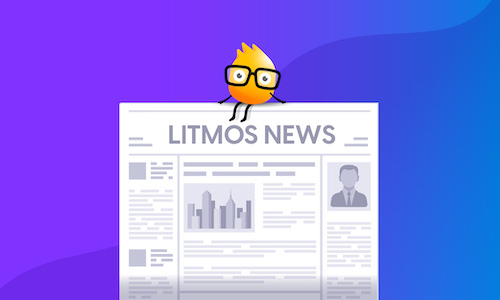Dr. Jill Stefaniak Discusses How to Apply Instructional Design Principles for Meaningful Learning Experiences
Litmos’ Chief Learning Officer, Dr. Jill Stefaniak, recently conducted a live webinar about how professionals can apply instructional design principles to their Learning & Development (L&D) programs to better address learner needs and improve learning outcomes. In this informative virtual session, Dr. Stefaniak also discussed the importance of aligning instructional activities, assessments, and evaluative outcomes.
Here are the key takeaways from this webinar – “Applying Instructional Design Principles for Meaningful Learning Experiences” – which is now available for on-demand viewing.
Takeaway #1: Instructional Design is Both a Science and an Art
Dr. Jill Stefaniak emphasized the importance of recognizing instructional design as both a science and an art, with the aim of facilitating learning and improving business performance.
“Instructional design is the science and art of creating detailed specifications for the development, evaluation, and maintenance of situations which facilitate learning and performance,” said Dr. Stefaniak. She explained that this perspective allows for the consideration of strategies that help in designing and delivering instruction while also allowing for the unique, context-specific modification of designs to meet the needs of specific learning audiences.
Approaching instructional design this way requires a balance between proven strategies and creative, context-specific solutions. “This is where (L&D professionals are) responsible for facilitating learning and improving performance. We’re looking at identifying opportunities to support employee and organizational goals, while designing and facilitating instructional solutions that engage learners.”
2: Needs Assessment is a Critical Element in the Instructional Design Process
Dr. Stefaniak highlighted the importance of scaling needs assessment in the instructional design process, explaining how it helps teams address recurring performance problems, improve the quality of existing organizational practices, and identify opportunities for growth and expansion.
The responses to these four key questions, Dr. Stefaniak argued, might help L&D teams iron out their needs assessment approach:
- What are your learners’ perceptions of utility regarding training?
- What do your learners value?
- How relevant is your learners’ training to daily job responsibilities?
- What mechanisms are in place to support learners after training?
“If you don’t have the opportunity to be able to engage in a large-scale needs assessment for any of your projects,” she advised attendees, “then these are four questions that you could ask during a kickoff meeting with your clients or your design team, just to make sure that everyone has a good understanding of what the needs are related to that particular project.”
3. Instructional Activities Should Be Planned with Performance Outcomes In Mind
Dr. Jill encouraged attendees to “keep the end in mind,” when designing training, by pinpointing which types of knowledge they want their learners to achieve. The three outcomes she highlighted were “Procedural knowledge,” “Conceptual knowledge,” and “Conditional knowledge.” Using real-world examples from her experience as an instructional designer, Dr. Stefaniak explained the subtle differences between each knowledge type.
The basic steps of the instructional design process, Dr. Stefaniak noted, are a great example of “procedural knowledge,” in that that they convey basic concepts and facts related to a particular topic and are laid out in a systematic and linear way. Various foundational learning theories – describing the ways in which learners retrieve and process knowledge – could be seen as conceptual knowledge. And lastly, conditional knowledge – according to Dr. Stefaniak – is what an instructional designer might apply in the real world, when they are engaging with stakeholders, clients, or learners in a variety of scenarios. Building real-world scenarios into learning programs can reinforce this kind of conditional knowledge for learners, regardless of the subject matter.
Dr. Stefaniak also stressed the importance of assessing the instructional fit, alignment, and congruence of a learning program to ensure that L&D becomes a part of the workplace culture, rather than an isolated activity. “Looking at ways in which we can achieve instructional congruence by empowering our learners, this is where L&D can be viewed as being central to workplace performance. Not just separated as ‘L&D efforts’ or ‘trainings that learners have to go through,’ but having (employees) think of L&D as just being a regular part of their job.”
The presentation ended with a lively Q&A session, in which Dr. Stefaniak responded to questions regarding how instructional designers measure utility in needs assessments, differences between various learning outcomes, best practices for qualitative data analysis, and scaling learning programs for distributed teams.
The core message of Dr. Stefaniak’s presentation was that learning leaders and L&D professionals should strive to create the most intuitive learning experiences possible, provide the most value possible to individual learners, drive engagement through learning, and give employees the tools they need to apply relevant knowledge within their organizations.
Ready to explore how instructional design principles could improve your workplace learning programs? Watch the webinar recording.





